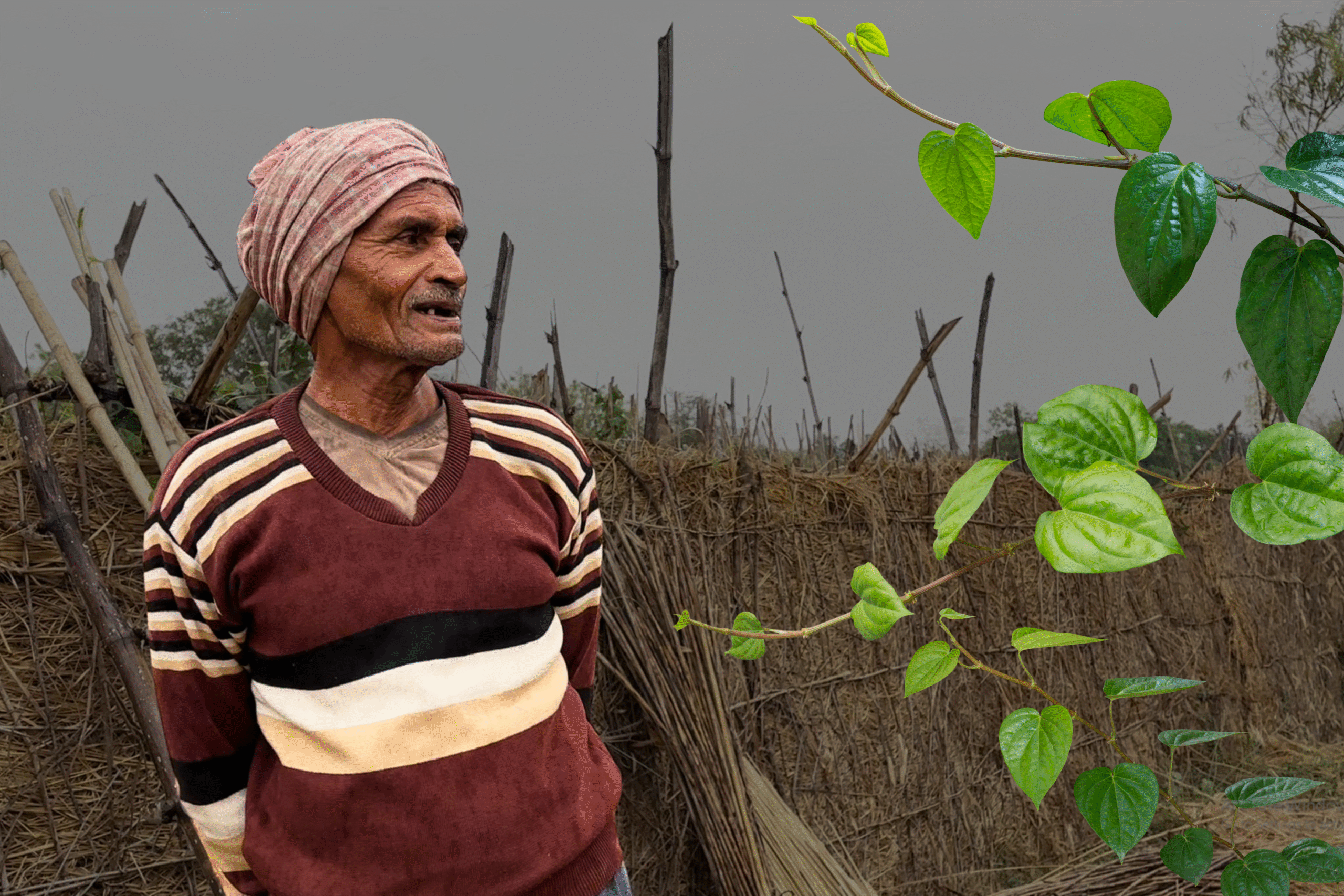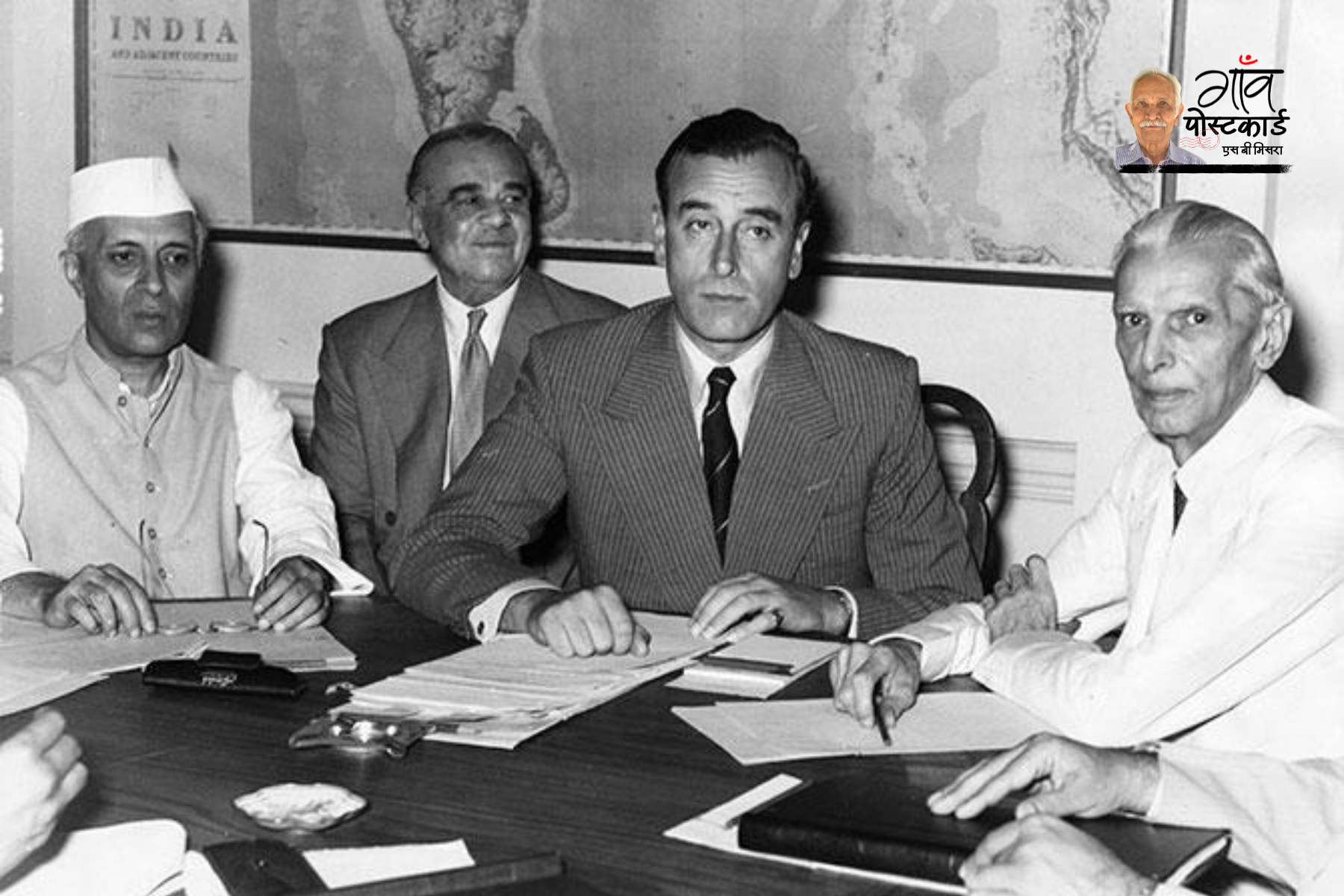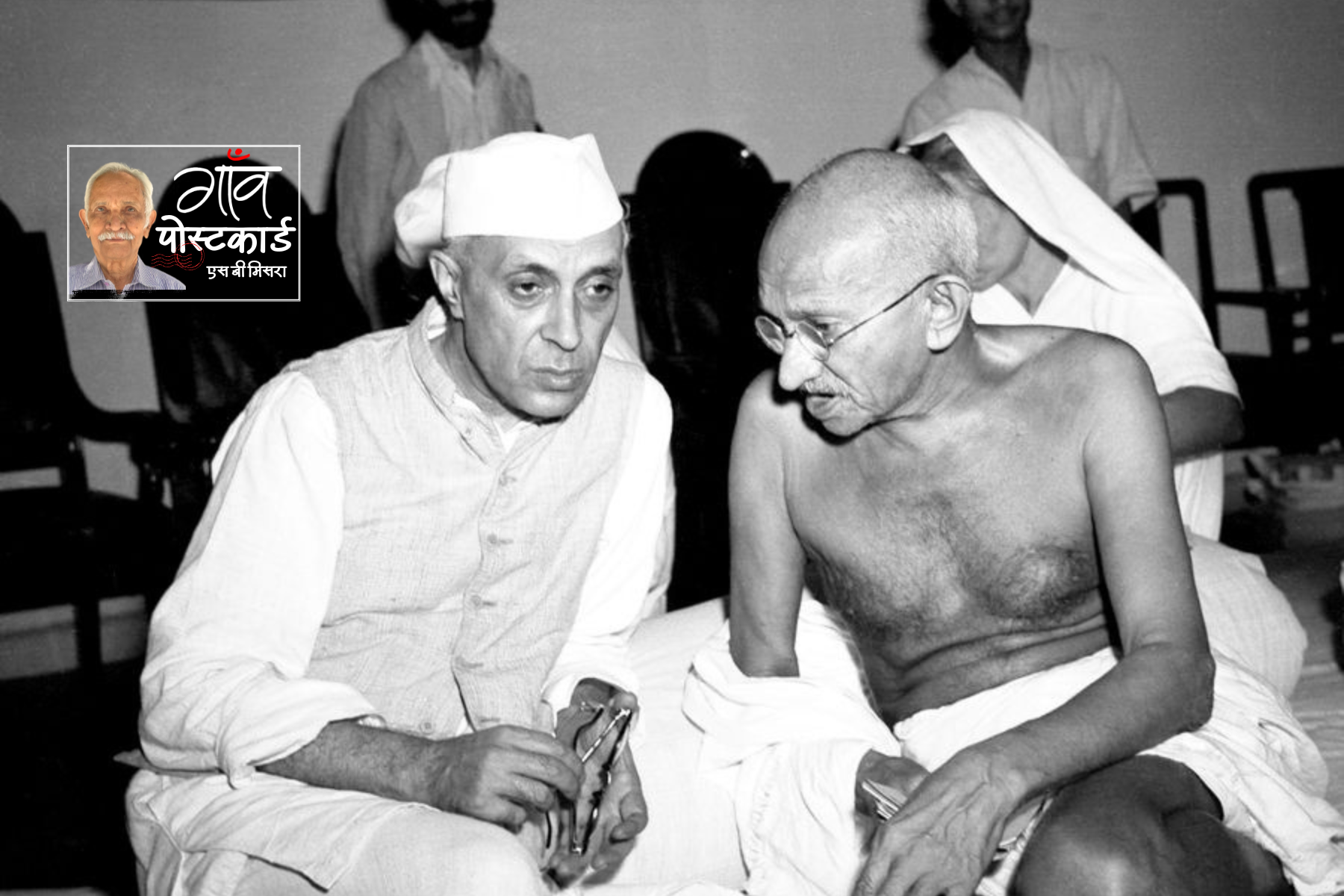Alur (Chamarajanagar), Karnataka
The drone lifted off with the sound of a thousand buzzing bees, and swooped across the two-acre field of sunflowers. There was an echoing buzz amongst the farmers who gathered there, curious about the noisy flying machine.
The drone was there by invitation by the owner of the sunflower farm, Puttu Swamy of Alur village in Chamarajanagar district in Karnataka, about 150 kms away from the state capital, Bengaluru.
“Puttu Swamy contacted us on the phone complaining that the seeds in the sunflowers were not forming fully. We studied his problem and recommended he use more Boron (a micronutrient vital to fertilization, fruit and seed production),” explained Shivapura Maribasappa Nagarjuna Kumar, founder-director of Bandipur Naturals Agrifarms Pvt Limited, an agri-startup set up last year in August.
“As farmers ourselves, we have been struggling with the acute shortage of farm labourers, and were thinking of alternative solutions to the problem,” said Nagarjuna whose family owns 30 acres of land in the Gundlupet taluk, in the district.
In January 2022, the Ministry of Agriculture and Farmers Welfare, issued guidelines to make drone technology affordable and more accessible. This got Nagarujun and his brother Niranjan thinking, and they joined hands with AM Manoj, founder of another start-up, Piefly R&D Pvt Limited, that manufactures drones.
Together, they started on a project to help farmers in the district. While they first tested the drone out in the 30 acres owned by Nagarjun’s family, in December last year, they did their first commercial spraying.
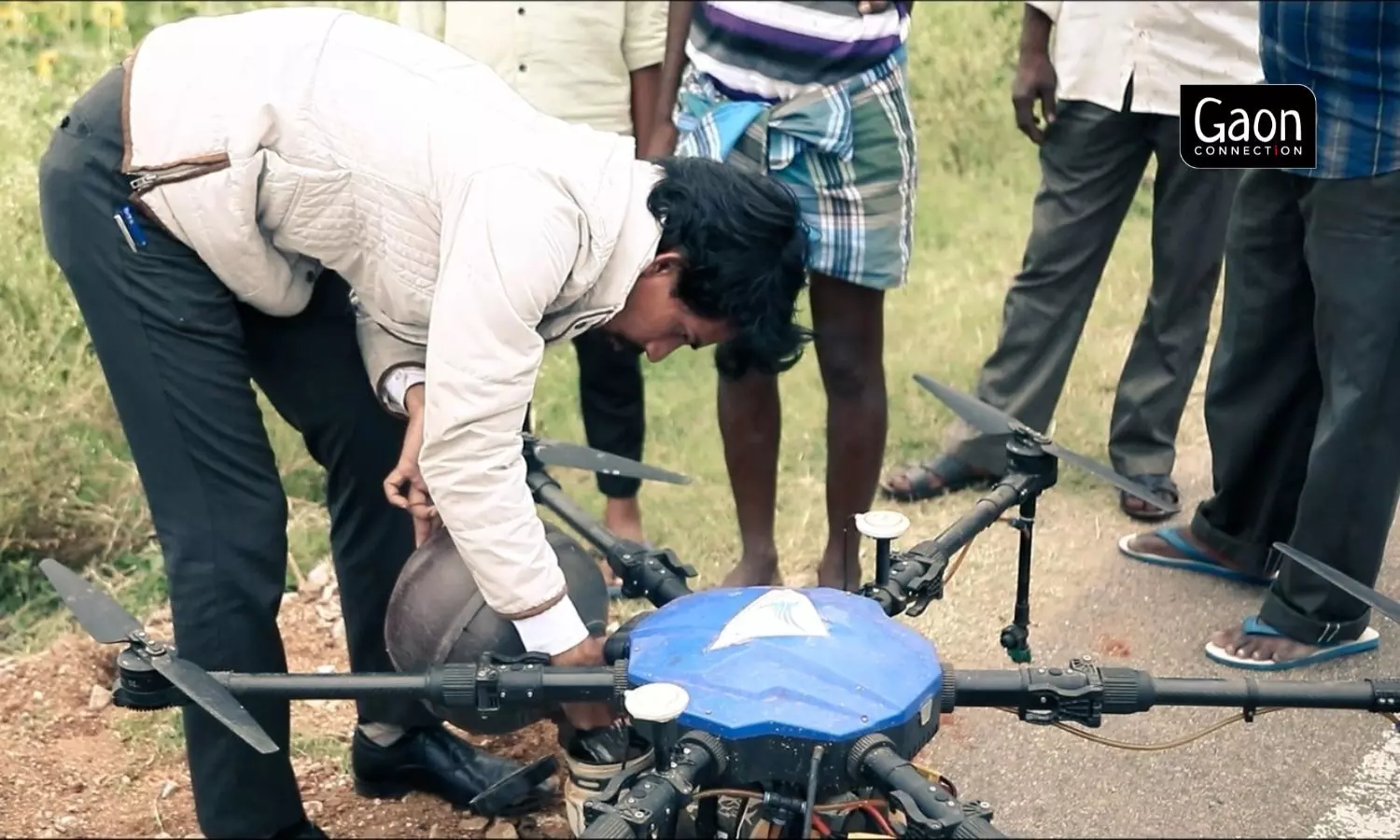
Nagarujun and his brother Niranjan joined hands with AM Manoj, founder of another start-up, to start a project to help farmers in the district.
The two start-ups have since provided drone services to about 70 villages, covering in all over 250 acres of land in Chamarajanagar and Mysuru districts.
Also Read: How an FPO in Barpeta, Assam, has left fish farmers swimming in profits
“Applying drone technology proved to be a perfect solution. It has been cost effective, time saving and a lot more efficient in protecting the crops,” Nagarjuna explained.
The aim is to cover all the villages in the two districts and then the rest of the state, before moving out to other states, said Nagarjun, and he hoped the formation of a Farmers Producers Organisation (FPO) with the support of the National Bank for Agriculture and Rural Development (NABARD) in the near future will help do that.
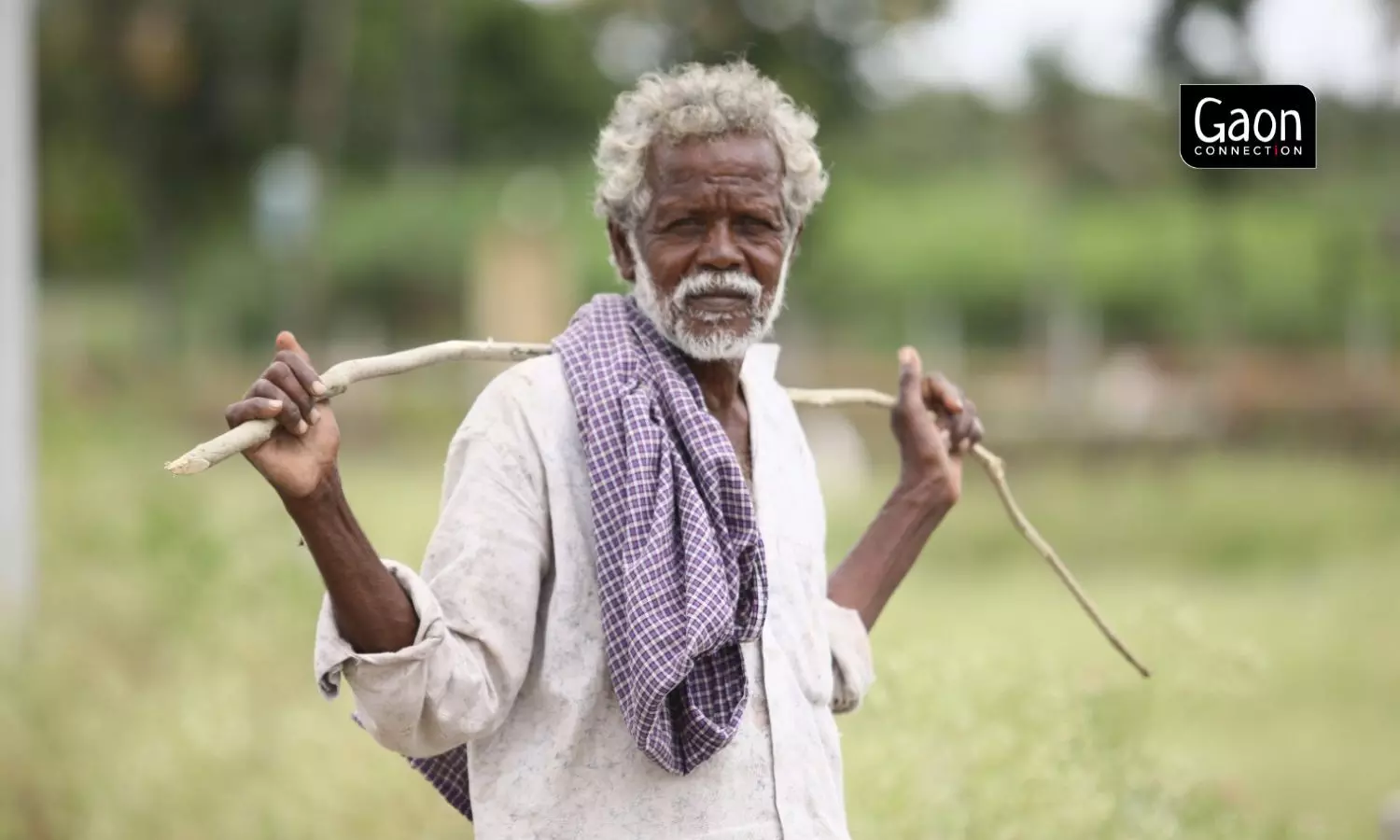
A baseline survey has been conducted by NABARD to set up an FPO through a Producer Organisation Promoting Institution, to guide the farmers and build capacity.
NABARD has already conducted a baseline survey of farmers in Gundlupet area in Chamarajanagar district. “Very soon an FPO will be formed which NABARD, through a Producer Organisation Promoting Institution, will guide and provide support for capacity building, exposure visits, etc,” Hitha G Suvarna, AGM (DD), NABARD, Chamrajnagar, said.
Bandipur Naturals Agrifarms Pvt Limited along with Piefly R&D Pvt will be the technology providers for the FPO.
According to the agriculture ministry, FPOs would be eligible to receive a grant up to 75 per cent of the cost of an agriculture drone for its demonstrations on the farmers’ fields. “If startups like ours are also given that subsidy, we could achieve a lot and reach out to many more farmers and help them,” Nagarjun said.
Drone delivering micronutrients
Meanwhile, back in Alur, Puttu Swamy’s sunflowers were the first in the area to receive their micronutrients delivered through the drone. Puttuswamy was prescribed 250 grams of boron for his two acres. And, he had to pay Rs 450 to have his land sprayed.
“The idea is to get as many farmers together as possible so that more the number of acres, the less it will cost each farmer to have his or her field sprayed,” explained Nagarjun.
Giving a live demo to the farmers gathered there, Nagarjun first dissolved a packet of boron in a pot of water which he then poured into special chambers in the drone.
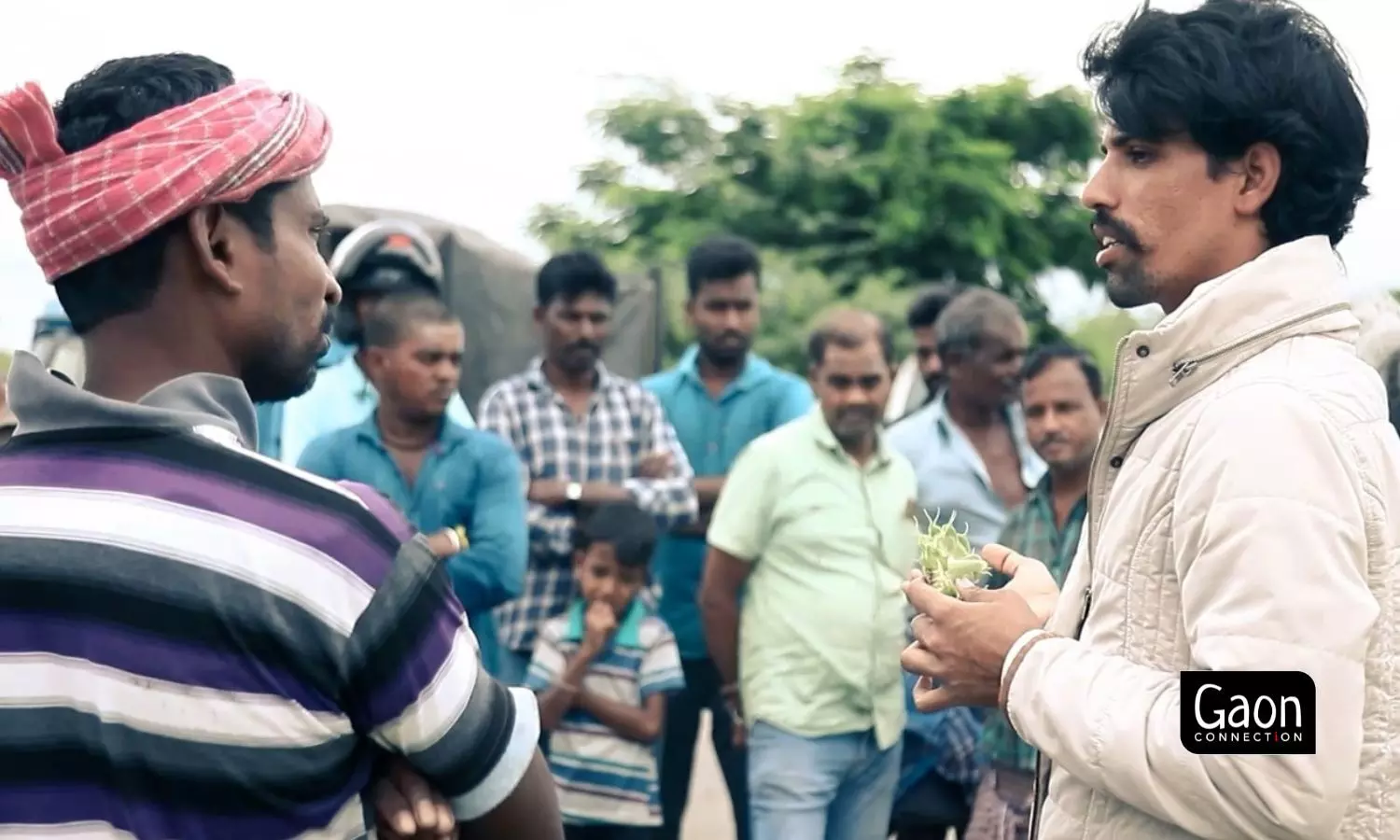
Nagarjun’s startup has a plant protection division that decides the dosage and other spray parameters for drone application.
As the drone took off, with the help of the remote control, the pilot of the drone activated the spraying action and in seconds every sunflower in the field received its exact recommended share of the nutrients.
“When spraying is done manually, it is haphazard and a lot of the inputs are lost. Many times the spraying is much more than required leading to a chemical overload and residue on the plant and on the soil,” Nagarjuna explained to the farmers. He added that spraying manually could also be harmful to health.
Labour and water savings
According to Nagarjuna, plant protection alone could raise productivity. And, timely spraying in the proper quantity was a big step towards increasing yield. “The farmers struggle to find labour. Even if they find people, it takes about six to eight hours for two or more people to spray two acres of land. The drone takes 10 minutes,” he pointed out.
But it has been a challenge to convince the farmers, admitted Nagarjun. “Most of them are marginal and small farmers and they are completely unaware of progressive farming techniques. What is more, when they go to buy their pesticides and fertilisers, they are sold unnecessarily huge amounts that increases their input cost which they can ill afford,” he added.
According to him, the use of drones will save on water too. “For instance in Puttu Swamy’s farm we have used 12 litres of water per acre. In manual farming the amount could go up to 200 litres per acre,” he said.
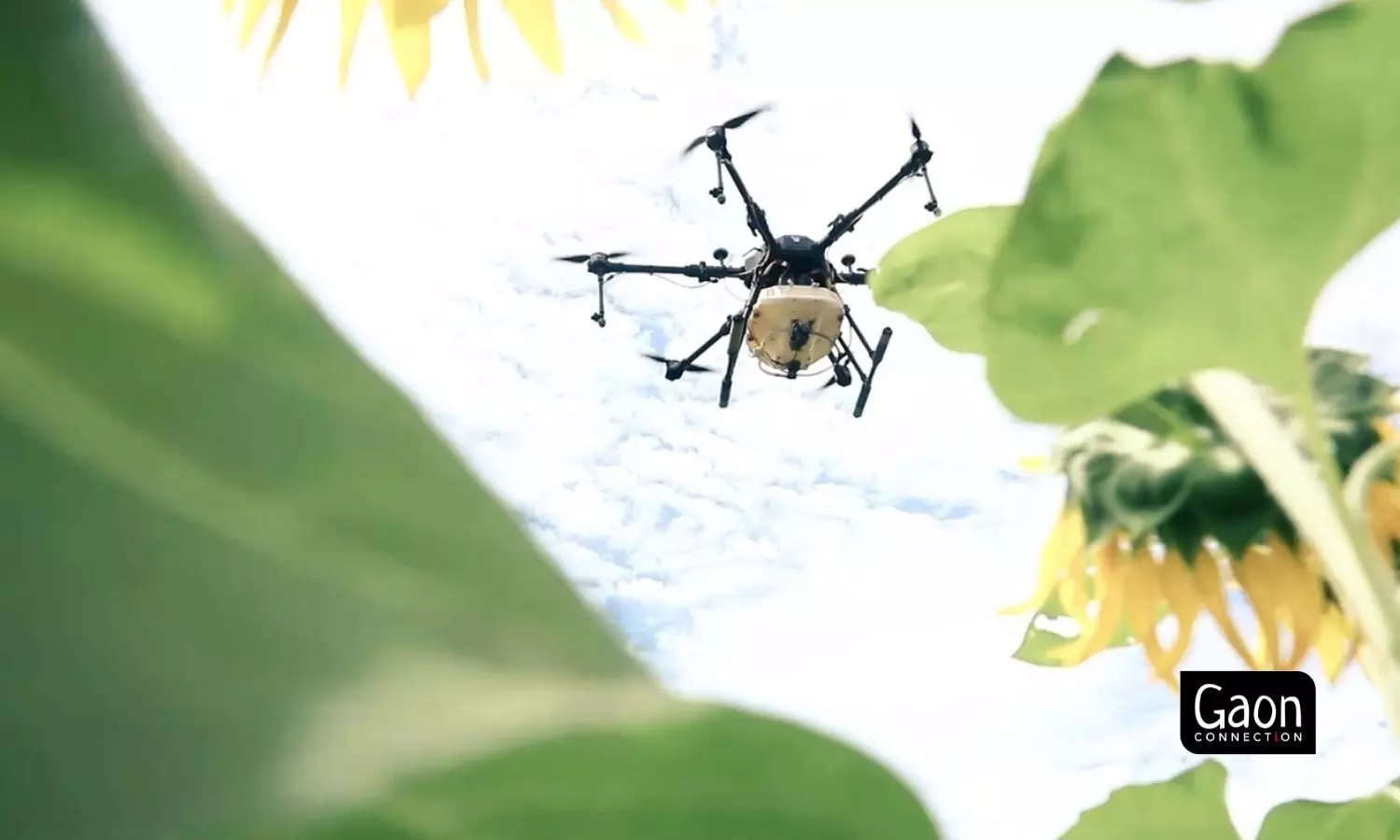
In Alur village of Karnataka, the drone was invited by the owner of the sunflower farm, Puttu Swamy who had reached out complaining that the seeds in the sunflowers were not forming fully.
Nagarjun’s startup has a plant protection division that decides the dosage and other spray parameters for drone application. It is made up of horticulturists and agro-scientists who provide farmers valuable advice and information on what inputs their crops need and in what quantities. “Our team made up of Thanuja G, Sampada N and Shivakumara S, give farmers prescriptions on the dosage so that they need not overuse,” Nagarjun said. “It is a free service and we are just a phone-call away,” he said.
At the moment, they use one drone that is transported in a vehicle across the districts. A generator goes along too so that at any given time there are batteries that are getting charged for use by the drone. Power supply is erratic and they can’t wait around waiting for electricity.
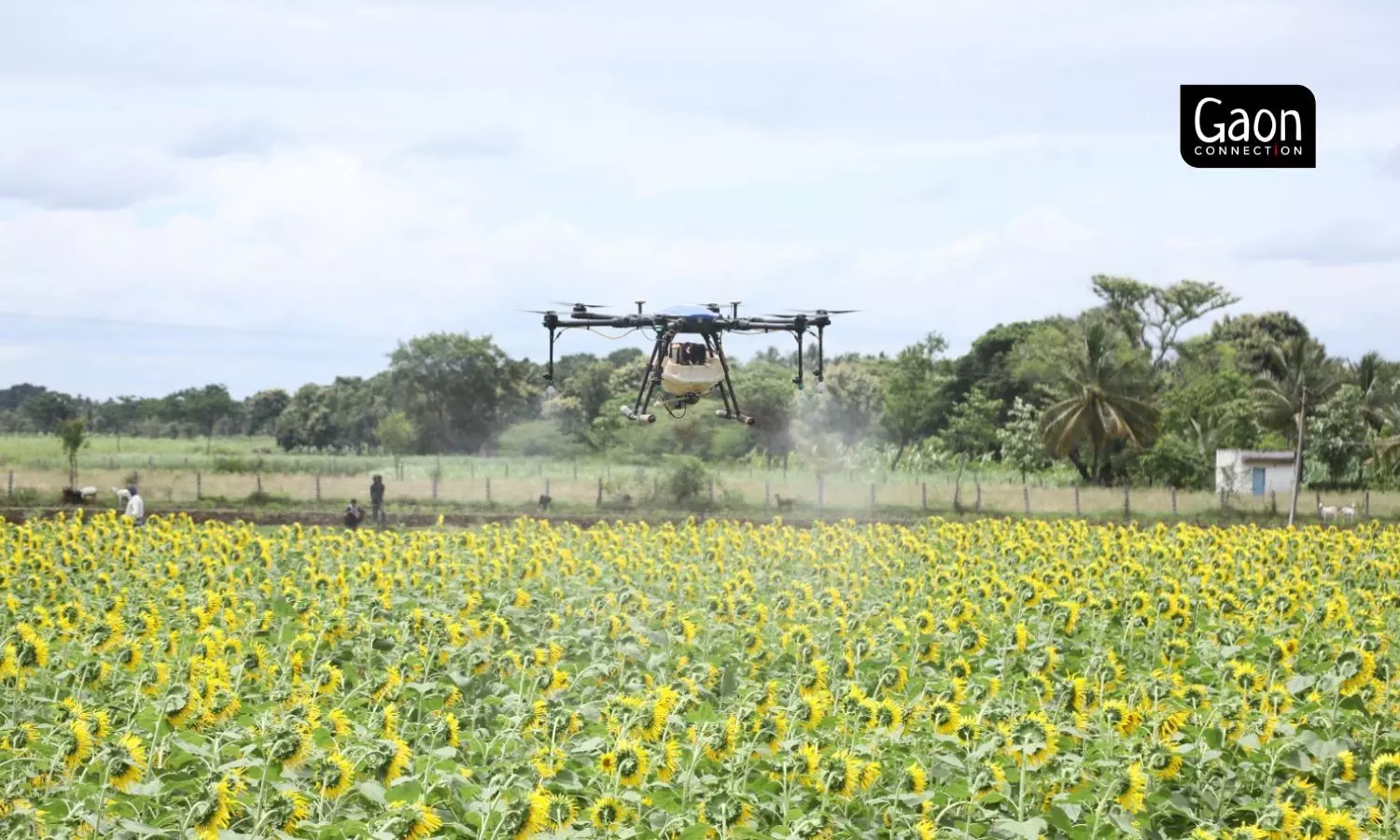
Drones are being introduced for quick performing tasks like spraying pesticides and to ensure reduced input costs.
“There are plans to get a couple of more drones as we expand our reach. They are expensive, but as more farmers see the benefit in using drone sprays, it will improve,” he said. Their aim was to increase crop-wise productivity, ensure minimal inputs for optimal returns and revolutionise agriculture through progressive scientific methods.
“There are far too many young people moving away from agriculture. That should not happen. And only if we make agriculture progressive, profitable and viable, will we make any significant headway in improving our lives,” the 32-year-old farmer-scientist said. “The drones are just a pat of it,” he smiled.
This story has been done as part of a partnership with NABARD.




